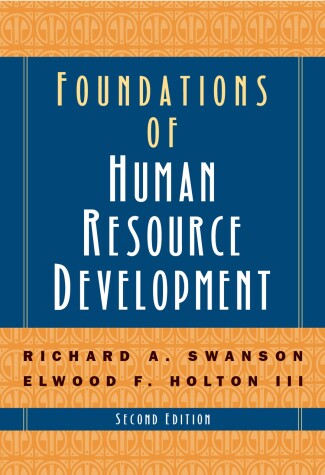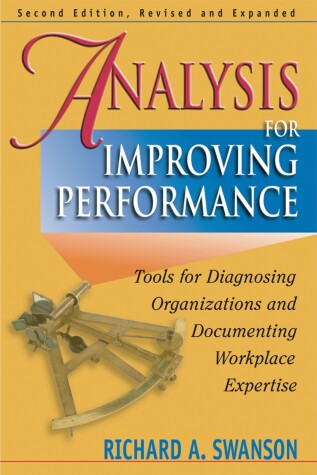The Berrett-Koehler Organizational Performance
2 total works
Foundations of Human Resource Development
by Richard Swanson and Elwood Holton
Published 9 February 2009
In Foundations of Human Resouce Development, Richard Swanson and Edward Holton provide an up-to-date overview of the HRD profession as well as the terminology and processes required for sound HRD research and practice. Swanson and Holton’s work is supplemented with contributions from Alexandre Ardichvili, Theo J. Bastiaens, Thomas J. Chermack, Richard W. Herling, K. Peter Kuchinke, Sharon S. Naquin, Wendy E. A. Ruona, Richard J. Torraco, Greg G. Wang, and Karen E. Watkins.
The book provides a basic understanding of the HRD models, processes, and history; critical theoretical and philosophical foundations of the field; learning and performance paradigms and models; HRD’s role in high-level organizational and systems-level issues; training and development and organization development—including examples of best practices along with variations in core thinking, processes, interventions, and tools; and much more.
The first edition won the Book of the Year Award from the prestigious Academy of Human Resource Development. This second edition has been completely revised, updated, and expanded, with new chapters on component HRD theories, policy and planning, technology, and globalization, as well as supplemental study materials, PowerPoint presentations, and figures available online at www.textbookresources.net.
The book provides a basic understanding of the HRD models, processes, and history; critical theoretical and philosophical foundations of the field; learning and performance paradigms and models; HRD’s role in high-level organizational and systems-level issues; training and development and organization development—including examples of best practices along with variations in core thinking, processes, interventions, and tools; and much more.
The first edition won the Book of the Year Award from the prestigious Academy of Human Resource Development. This second edition has been completely revised, updated, and expanded, with new chapters on component HRD theories, policy and planning, technology, and globalization, as well as supplemental study materials, PowerPoint presentations, and figures available online at www.textbookresources.net.
Corporations spend millions of dollars on performance improvement, employee training and development, work system redesign, and other organizational improvement efforts. Much of this money is wasted because the preliminary analysis and diagnosis has not been done to link these programs to an organization's real business needs, goals, and processes.
The truth is that in order for any performance improvement effort to add value to the organization, deep analysis is required. Analysis for Improving Performance details a systematic approach for doing the rigorous preparatory analysis that is vital to shaping and developing successful performance improvement efforts.
Richard A. Swanson's methods enable program developers and managers to define clear objectives, assess existing systems and missions, analyze worker knowledge and expertise, define desired performance and evaluation standards, and develop a performance improvement plan that will meet the desired performance goals.
This new edition has been extensively revised throughout and presents expanded concepts and updated cases, as well as a new chapter on documenting and improving work processes and documenting process-referenced tasks. Written for take-charge managers, performance improvement specialists, and workers wanting to improve their organizations, Analysis for Improving Performance provides “real-world” knowledge, tools, examples, graphics, and exercises aimed at developing your expertise in diagnosing organizational performance and documenting workplace expertise—the keys to long-term organizational success. In short, it is a complete guide to ensuring that the time, money, and effort you invest in organizational development are well spent.
The truth is that in order for any performance improvement effort to add value to the organization, deep analysis is required. Analysis for Improving Performance details a systematic approach for doing the rigorous preparatory analysis that is vital to shaping and developing successful performance improvement efforts.
Richard A. Swanson's methods enable program developers and managers to define clear objectives, assess existing systems and missions, analyze worker knowledge and expertise, define desired performance and evaluation standards, and develop a performance improvement plan that will meet the desired performance goals.
This new edition has been extensively revised throughout and presents expanded concepts and updated cases, as well as a new chapter on documenting and improving work processes and documenting process-referenced tasks. Written for take-charge managers, performance improvement specialists, and workers wanting to improve their organizations, Analysis for Improving Performance provides “real-world” knowledge, tools, examples, graphics, and exercises aimed at developing your expertise in diagnosing organizational performance and documenting workplace expertise—the keys to long-term organizational success. In short, it is a complete guide to ensuring that the time, money, and effort you invest in organizational development are well spent.

